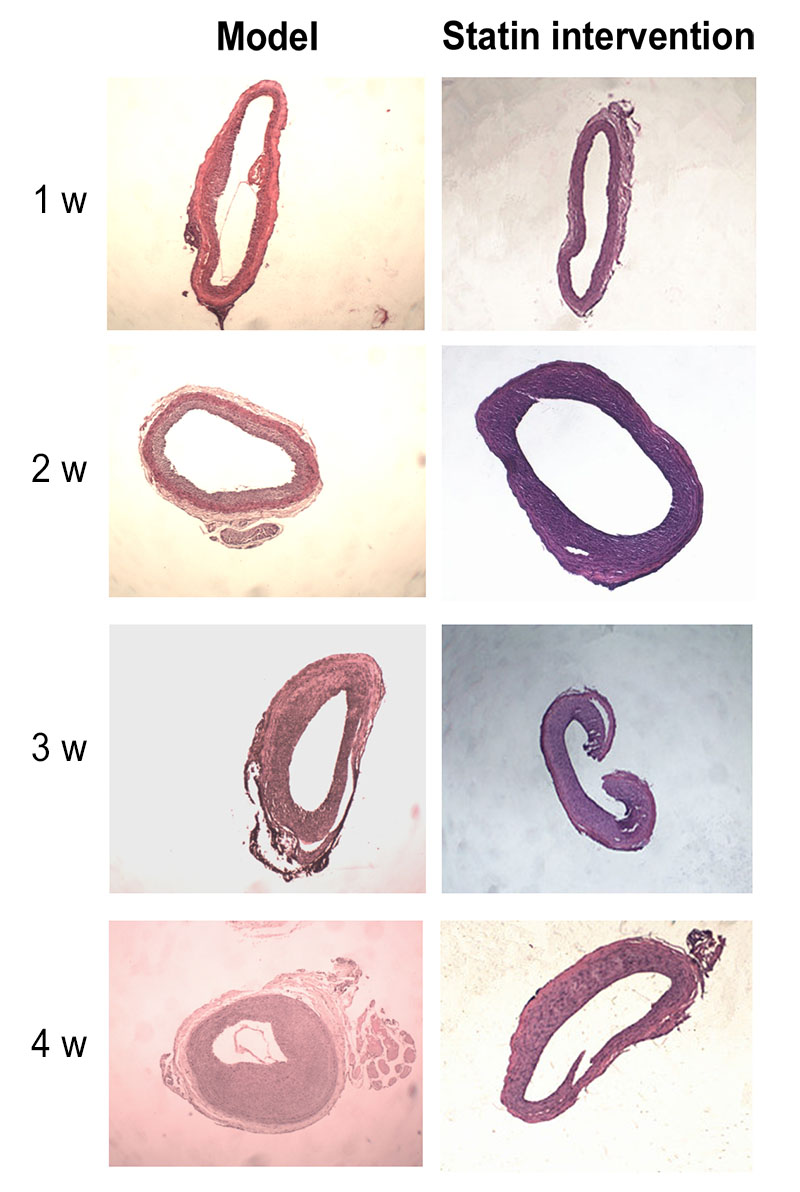Volume 111, Nº 4, October 2018
DOI: http://www.dx.doi.org/10.5935/abc.20180163
ORIGINAL ARTICLE
Effects of Rosuvastatin on Apolipoprotein J in Balloon-Injured Carotid Artery in Rats
Ning Yang
Bo Dong
Jinyu Yang
Yang Li
Lu Kou
Yue Liu
Qin Qin

Figure 2 – Hematoxylin-eosin (HE) staining in the model group and in intervention group 1 week (w), 2 weeks, 3 weeks and 4 weeks after balloon injury of rat carotid arteries; magnification 40×.
Abstract
Background: Restenosis after percutaneous coronary intervention in coronary heart disease remains an unsolved problem. Clusterin (CLU) (or Apolipoprotein [Apo] J) levels have been reported to be elevated during the progression of postangioplasty restenosis and atherosclerosis. However, its role in neointimal hyperplasia is still controversial.
Objective: To elucidate the role Apo J in neointimal hyperplasia in a rat carotid artery model in vivo with or without rosuvastatin administration.
Methods: Male Wistar rats were randomly divided into three groups: the control group (n = 20), the model group (n = 20) and the statin intervention group (n = 32). The rats in the intervention group were given 10mg /kg dose of rosuvastatin. A 2F Fogarty catheter was introduced to induce vascular injury. Neointima formation was analyzed 1, 2, 3 and 4 weeks after balloon injury. The level of Apo J was measured by real time PCR, immunohistochemistry and western blotting.
Results: Intimal/medial area ratio (intimal/medial, I/M) was increased after balloon-injury and reached the maximum value at 4weeks in the model group; I/M was slightly increased at 2 weeks and stopped increasing after rosuvastatin administration. The mRNA and protein levels of Apo J in carotid arteries were significantly upregulated after rosuvastatin administration as compared with the model group, and reached maximum values at 2 weeks, which was earlier than in the model group (3 weeks).
Conclusion: Apo J served as an acute phase reactant after balloon injury in rat carotid arteries. Rosuvastatin may reduce the neointima formation through up-regulation of Apo J. Our results suggest that Apo J exerts a protective role in the restenosis after balloon-injury in rats. (Arq Bras Cardiol. 2018; 111(4):562-568)
Keywords: Coronary Artery Dsease; Percutaneous Coronary Intervention; Rosuvastatin Calcium; Apolipoprotein J; Coronary Reestenosis; Rats.















